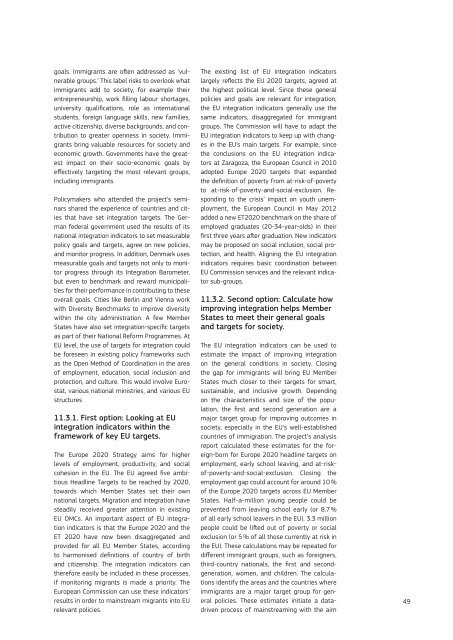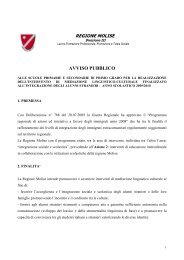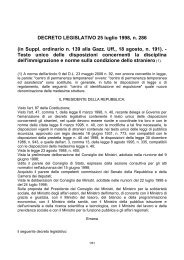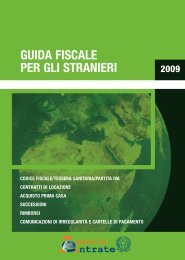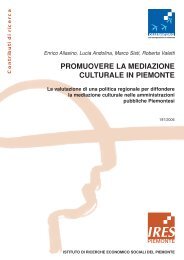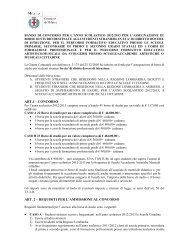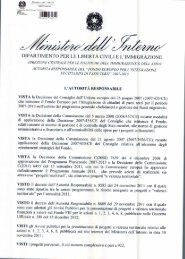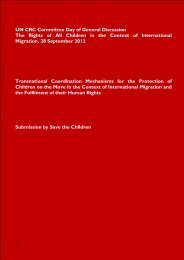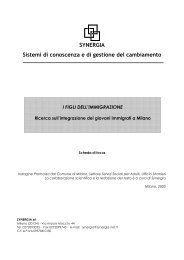Using EU Indicators of Immigrant Integration - European ...
Using EU Indicators of Immigrant Integration - European ...
Using EU Indicators of Immigrant Integration - European ...
- No tags were found...
You also want an ePaper? Increase the reach of your titles
YUMPU automatically turns print PDFs into web optimized ePapers that Google loves.
goals. <strong>Immigrant</strong>s are <strong>of</strong>ten addressed as ‘vulnerablegroups.’ This label risks to overlook whatimmigrants add to society, for example theirentrepreneurship, work filling labour shortages,university qualifications, role as internationalstudents, foreign language skills, new families,active citizenship, diverse backgrounds, and contributionto greater openness in society. <strong>Immigrant</strong>sbring valuable resources for society andeconomic growth. Governments have the greatestimpact on their socio-economic goals byeffectively targeting the most relevant groups,including immigrants.Policymakers who attended the project’s seminarsshared the experience <strong>of</strong> countries and citiesthat have set integration targets. The Germanfederal government used the results <strong>of</strong> itsnational integration indicators to set measurablepolicy goals and targets, agree on new policies,and monitor progress. In addition, Denmark usesmeasurable goals and targets not only to monitorprogress through its <strong>Integration</strong> Barometer,but even to benchmark and reward municipalitiesfor their performance in contributing to theseoverall goals. Cities like Berlin and Vienna workwith Diversity Benchmarks to improve diversitywithin the city administration. A few MemberStates have also set integration-specific targetsas part <strong>of</strong> their National Reform Programmes. At<strong>EU</strong> level, the use <strong>of</strong> targets for integration couldbe foreseen in existing policy frameworks suchas the Open Method <strong>of</strong> Coordination in the area<strong>of</strong> employment, education, social inclusion andprotection, and culture. This would involve Eurostat,various national ministries, and various <strong>EU</strong>structures11.3.1. First option: Looking at <strong>EU</strong>integration indicators within theframework <strong>of</strong> key <strong>EU</strong> targets.The Europe 2020 Strategy aims for higherlevels <strong>of</strong> employment, productivity, and socialcohesion in the <strong>EU</strong>. The <strong>EU</strong> agreed five ambitiousHeadline Targets to be reached by 2020,towards which Member States set their ownnational targets. Migration and integration havesteadily received greater attention in existing<strong>EU</strong> OMCs. An important aspect <strong>of</strong> <strong>EU</strong> integrationindicators is that the Europe 2020 and theET 2020 have now been disaggregated andprovided for all <strong>EU</strong> Member States, accordingto harmonised definitions <strong>of</strong> country <strong>of</strong> birthand citizenship. The integration indicators cantherefore easily be included in these processes,if monitoring migrants is made a priority. The<strong>European</strong> Commission can use these indicators’results in order to mainstream migrants into <strong>EU</strong>relevant policies.The existing list <strong>of</strong> <strong>EU</strong> integration indicatorslargely reflects the <strong>EU</strong> 2020 targets, agreed atthe highest political level. Since these generalpolicies and goals are relevant for integration,the <strong>EU</strong> integration indicators generally use thesame indicators, disaggregated for immigrantgroups. The Commission will have to adapt the<strong>EU</strong> integration indicators to keep up with changesin the <strong>EU</strong>’s main targets. For example, sincethe conclusions on the <strong>EU</strong> integration indicatorsat Zaragoza, the <strong>European</strong> Council in 2010adopted Europe 2020 targets that expandedthe definition <strong>of</strong> poverty from at-risk-<strong>of</strong>-povertyto at-risk-<strong>of</strong>-poverty-and-social-exclusion. Respondingto the crisis’ impact on youth unemployment,the <strong>European</strong> Council in May 2012added a new ET2020 benchmark on the share <strong>of</strong>employed graduates (20-34-year-olds) in theirfirst three years after graduation. New indicatorsmay be proposed on social inclusion, social protection,and health. Aligning the <strong>EU</strong> integrationindicators requires basic coordination between<strong>EU</strong> Commission services and the relevant indicatorsub-groups.11.3.2. Second option: Calculate howimproving integration helps MemberStates to meet their general goalsand targets for society.The <strong>EU</strong> integration indicators can be used toestimate the impact <strong>of</strong> improving integrationon the general conditions in society. Closingthe gap for immigrants will bring <strong>EU</strong> MemberStates much closer to their targets for smart,sustainable, and inclusive growth. Dependingon the characteristics and size <strong>of</strong> the population,the first and second generation are amajor target group for improving outcomes insociety, especially in the <strong>EU</strong>’s well-establishedcountries <strong>of</strong> immigration. The project’s analysisreport calculated these estimates for the foreign-bornfor Europe 2020 headline targets onemployment, early school leaving, and at-risk<strong>of</strong>-poverty-and-social-exclusion.Closing theemployment gap could account for around 10 %<strong>of</strong> the Europe 2020 targets across <strong>EU</strong> MemberStates. Half-a-million young people could beprevented from leaving school early (or 8.7 %<strong>of</strong> all early school leavers in the <strong>EU</strong>). 3.3 millionpeople could be lifted out <strong>of</strong> poverty or socialexclusion (or 5 % <strong>of</strong> all those currently at risk inthe <strong>EU</strong>). These calculations may be repeated fordifferent immigrant groups, such as foreigners,third-country nationals, the first and secondgeneration,women, and children. The calculationsidentify the areas and the countries whereimmigrants are a major target group for generalpolicies. These estimates initiate a datadrivenprocess <strong>of</strong> mainstreaming with the aim49


